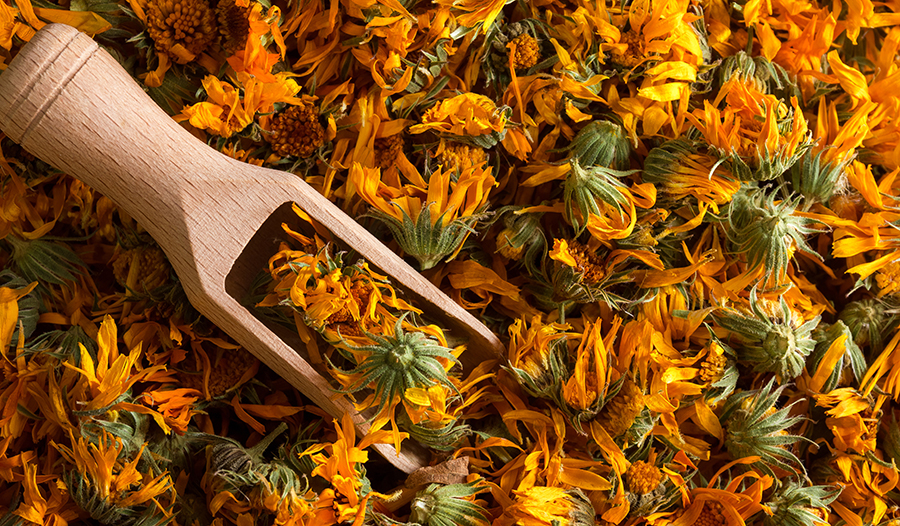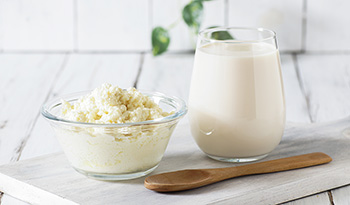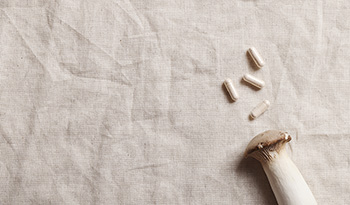Top Calendula Skin Benefits, According To A Pharmacist

Key Takeaways
- Calendula is a medicinal flower known for its soothing properties.
- Its active compounds help heal wounds, soothe irritation, and provide antioxidant protection.
- It's a key natural ingredient for repairing minor cuts, scrapes, and burns.
What Is Calendula Officinalis?
Calendula officinalis, commonly known as the garden marigold, is a bright yellow-orange flower in the daisy family (Asteraceae). Used for centuries in traditional practices, its petals and extracts are known for their soothing properties. Today, Calendula remains a key ingredient in topical skin care products to heal cuts, scrapes, and minor burns.
Calendula’s Skin Health Benefits
Extracts of Calendula flowers have been studied for their ability to support skin healing thanks to active compounds found in the plant, including carotenoids, polysaccharides, and flavonoids. Research shows these ingredients help promote the growth of new skin tissue and encourage the repair of damaged skin, both of which are important for wound recovery.1-7
Tips For Applying Calendula Topicals
For optimal results when using Calendula first aid creams, ointments, and gels:
- Apply a thin layer to clean, dry skin
- Avoid thick applications that may trap moisture or limit airflow
- Don’t combine with other topical products, which can affect absorption
Creams and ointment formulas offer moisturizing benefits and are well-suited for wound care. Gels provide a cooling sensation, making them a refreshing option for mild irritations like razor burn or insect bites.
Calendula topicals are generally well tolerated. Allergic reactions are rare and typically occur only with highly concentrated or excessive use. If you have sensitive skin or a known allergy to plants in the daisy family, apply to a small test area first.
Calendula offers a reliable option for skin care and first aid. Its use in homeopathic topicals is backed by long-standing experience and careful preparation methods. From minor irritations to small cuts and scrapes, Calendula officinalis provides a plant-based option that many health professionals recognize and trust.
Choosing The Best Calendula Preparation
While Calendula extracts have been studied for their role in skin healing, homeopathic preparations are distinct in their preparation and use. Homeopathic Calendula is traditionally used in topical medicines and is prepared according to the standards of the Homeopathic Pharmacopoeia of the United States (HPUS), the officially recognized reference for quality and preparation upheld by reputable manufacturers and the federal government.
Homeopathic preparations offer several advantages. The extract is made by macerating the Calendula plant at room temperature in a purified water and ethanol solution, a process that helps preserve active compounds. The flowers are cultivated without chemical fertilizers or pesticides, and both the raw material and finished product are held to strict pharmaceutical quality controls. Regulated as drugs, homeopathic preparations of Calendula also come with clear indications and directions for use, helping patients and health care professionals alike.
References:
- PDR for Herbal Medicines. 4th ed. Montvale, NJ. Thomson PDR; 2007.
- Fronza M, Heinzmann B, Hamburger M, Laufer S, Merfort I. Determination of the wound healing effect of Calendula extracts using the scratch assay with 3T3 fibroblasts. Journal of Ethnopharmacology. 2009;126(3):463-467. doi:10.1016/j.jep.2009.09.014.
- Preethi K, Kuttan R. Wound healing activity of flower extract of Calendula officinalis. Journal of Basic and Clinical Physiology and Pharmacology. 2009;20(1). doi:10.1515/jbcpp.2009.20.1.73.
- Parente LML, Júnior RDSL, Tresvenzol LMF, Vinaud MC, Paula JRD, Paulo NM. Wound healing and anti-inflammatory effect in animal models of calendula officinalis L. growing in brazil. Evidence-Based Complementary and Alternative Medicine. 2012;2012:1-7. doi:10.1155/2012/375671.
- Chandran PK, Kuttan R. Effect of calendula officinalis flower extract on acute phase proteins, antioxidant defense mechanism and granuloma formation during thermal burns. Journal of Clinical Biochemistry and Nutrition. 2008;43(2):58-64. doi:10.3164/jcbn.2008043.
- Klouchek-Popova E, Popov A, Pavlova N, Krusteva S. Influence of the physiological regeneration and epithelization using fractions isolated from Calendula officinalis. Acta Physiologica Et Pharmacologica Bulgarica. 1982;8(4):63-67.
- Leach MJ. Calendula officinalis and wound healing: A systematic review. Wounds. 2008;20(8):1-7.
VYHLÁSENIE: Toto Centrum zdravia a pohody neposkytuje diagnózu,...












































































 Obsah
Obsah














